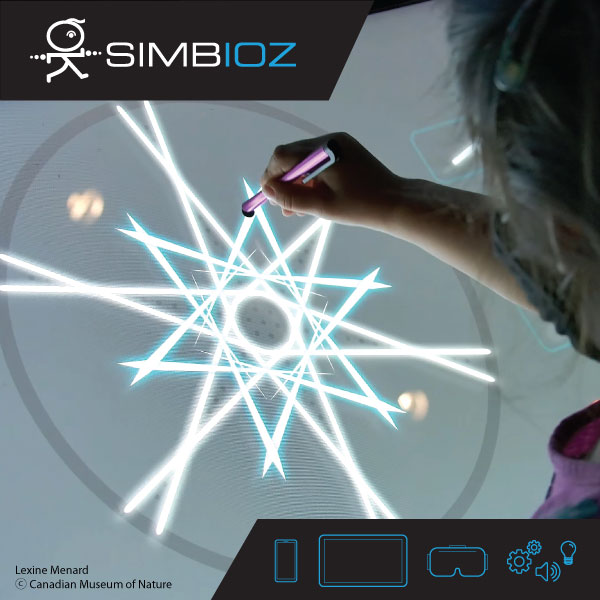Young Canada Works Success Stories: Digital Projects During COVID-19
Louise Pitre
As we approached the 2020-21 Young Canada Works (YCW) funding year, the pandemic left museum professionals and YCW program officers alike wondering and worrying if we would be able to carry forward with employment plans funded through the YCW program. With in-person visits restricted or barred completely, I was concerned that the YCW pool of applicants would see their opportunities restricted, and museums without the operational support they needed. Now that the funding year has closed and the paperwork filed, we know that approximately 24 YCW Building Careers in Heritage (YCW-BCH) positions, also referred to as graduate internships, were cancelled as a result of the pandemic.
However, as striking as that figure is, overall, my worry was unfounded. Only a small percentage of the total number of positions were cancelled due to pandemic restrictions. Many museums, particularly those that were utilizing funding through YCW-BCH (also referred to as the internship stream) were able to adapt and demonstrate innovative practices by transitioning their positions to ones that could be performed virtually, and in many cases, to projects that would benefit the museum as well as their public in the years to come.
For its part, the Government of Canada increased per-position funding for the YCW program from 75% to 85% of salary costs and loosened some program restrictions, such as allowing repeat participation and removing the requirement to have graduated within the previous 24 months. These measures would help museums take advantage of this federal funding opportunity. However, it was up to the museum professionals to be creative, to find the right candidates and new ways of working and supervising.
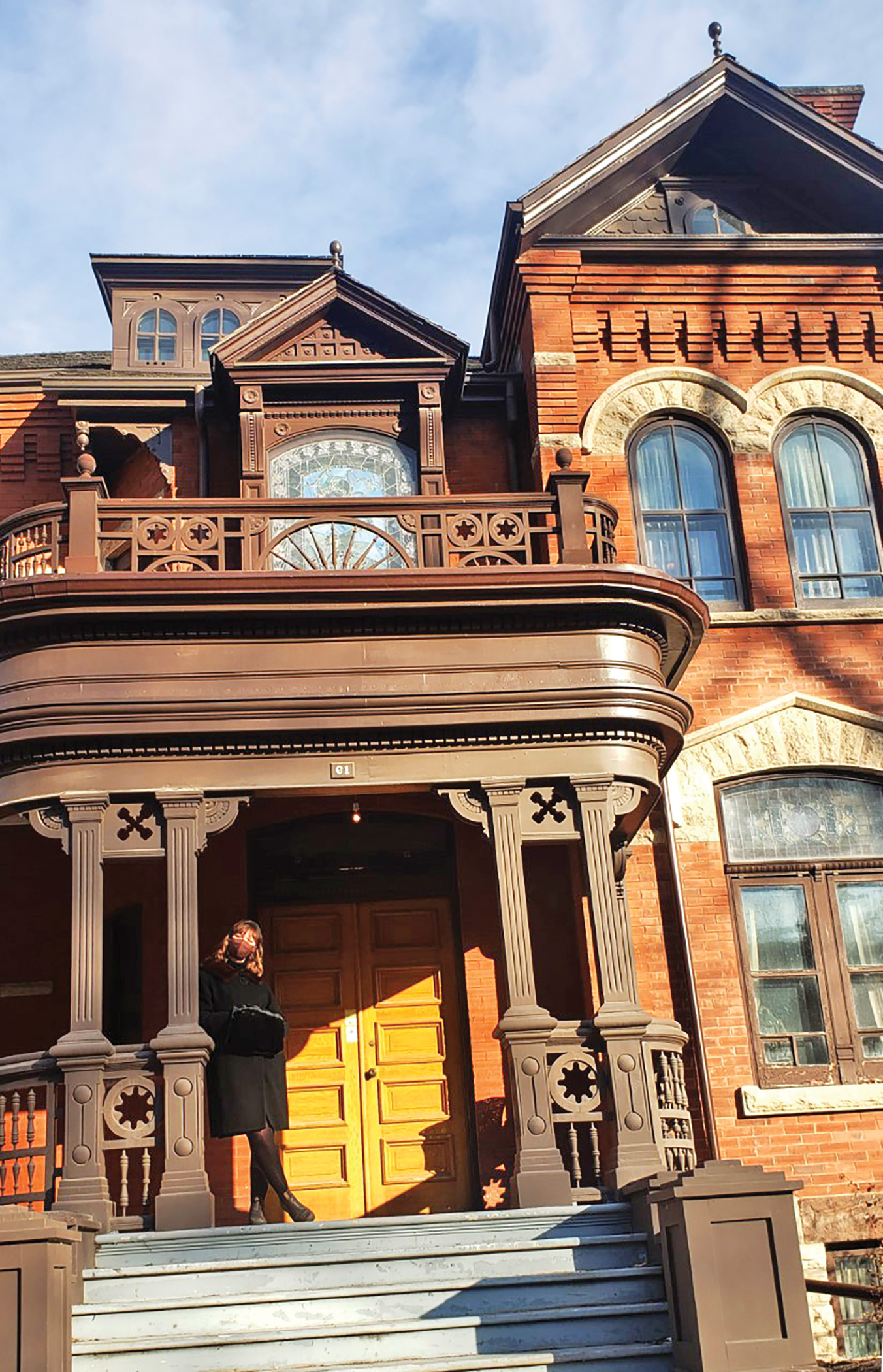
Ayda Loewen-Clarke standing on the porch of Dalnavert Museum. Photo — Katelyn McIntyre
At the Dalvanert Museum, a YCW-BCH intern, Ayda Loewen-Clarke, organized a project that invited participants to imagine themselves as curators in their own homes. Visitors to the museum’s website were asked to select a meaningful object from their own home for digital display in the museum’s Stories from Home exhibit. Utilizing additional funding provided by Safe at Home Manitoba, a provincial funding initiative, the Dalnavert leveraged its foundation as a historic house, and referenced its collection full of everyday items used during the Victorian period. In turn, it asked participants to think like a curator in their own homes, select an object and explain why it is meaningful to them or would be meaningful to a future viewer seeing it in a museum context.
The gallery of submitted objects and their descriptions as submitted by the public is still up on the Dalnavert’s website. Submissions include a white Robin Hood Flour bag with an accompanying text explaining that due to high demand for baking supplies during the pandemic, the brand ran out of its yellow branded bags and had to sell its flour in plain white bags. This object reflects how popular baking became during lockdowns and how everyone, including manufacturers, adapted quickly to pandemic circumstances. Another interesting submission was a photo of origami boxes made by a physician to calm her during the stressful times brought on by the pandemic. The project gave participants a way to engage meaningfully with the museum’s core collection and allowed them to reflect on what the pandemic meant to them.
 |
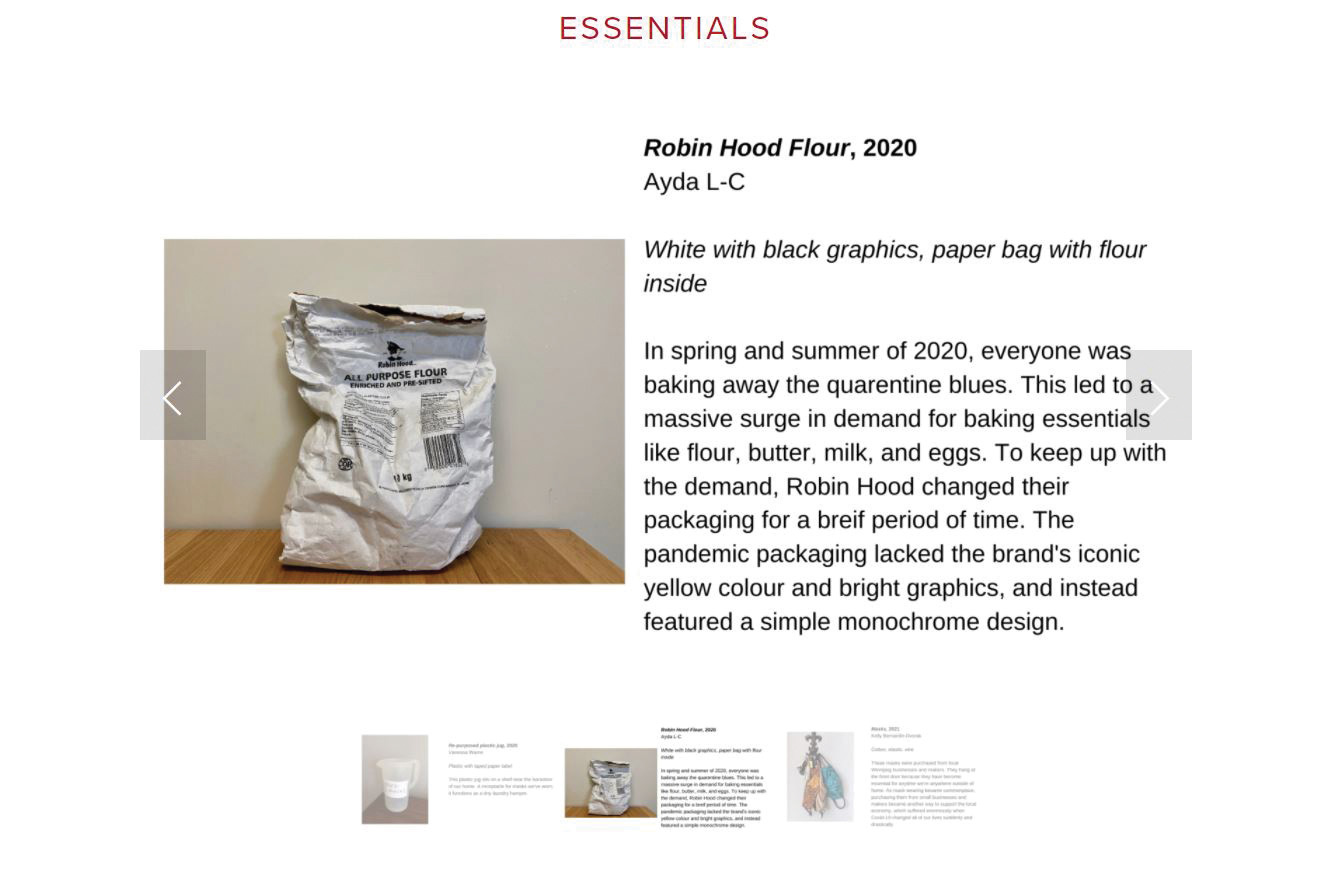 |
The internship also led to the digital development of existing museum activities. Through her position as the Creative Programming and Digital Media Intern, Ayda helped the museum improve its virtual accessibility when physical access became strictly limited. She adapted the Dalnavert’s existing school programs so that they could be offered in an online format; refined the website to feature virtual offerings more prominently; and contributed blog posts on Victorian culture. Ayda was also able to contribute to other digital museum activities that are almost becoming standard practice, including a virtual tour, a Literature Out Loud as well as a lecture series focusing on a local figure from the neighbourhood’s past, Elizabeth Alloway.
In another example, the Museum of North Vancouver (MONOVA) was able to hire a Museum Theatre Intern, Chantal Gallant, using YCW-BCH funding. A major part of her role was to update and stage a theatrical piece incorporating one of the museum’s most treasured artifacts, Streetcar 153, which travelled the streets of North Vancouver from 1912 until it was decommissioned in 1946. In recent years, it has been carefully restored to its early 20th-century glory.
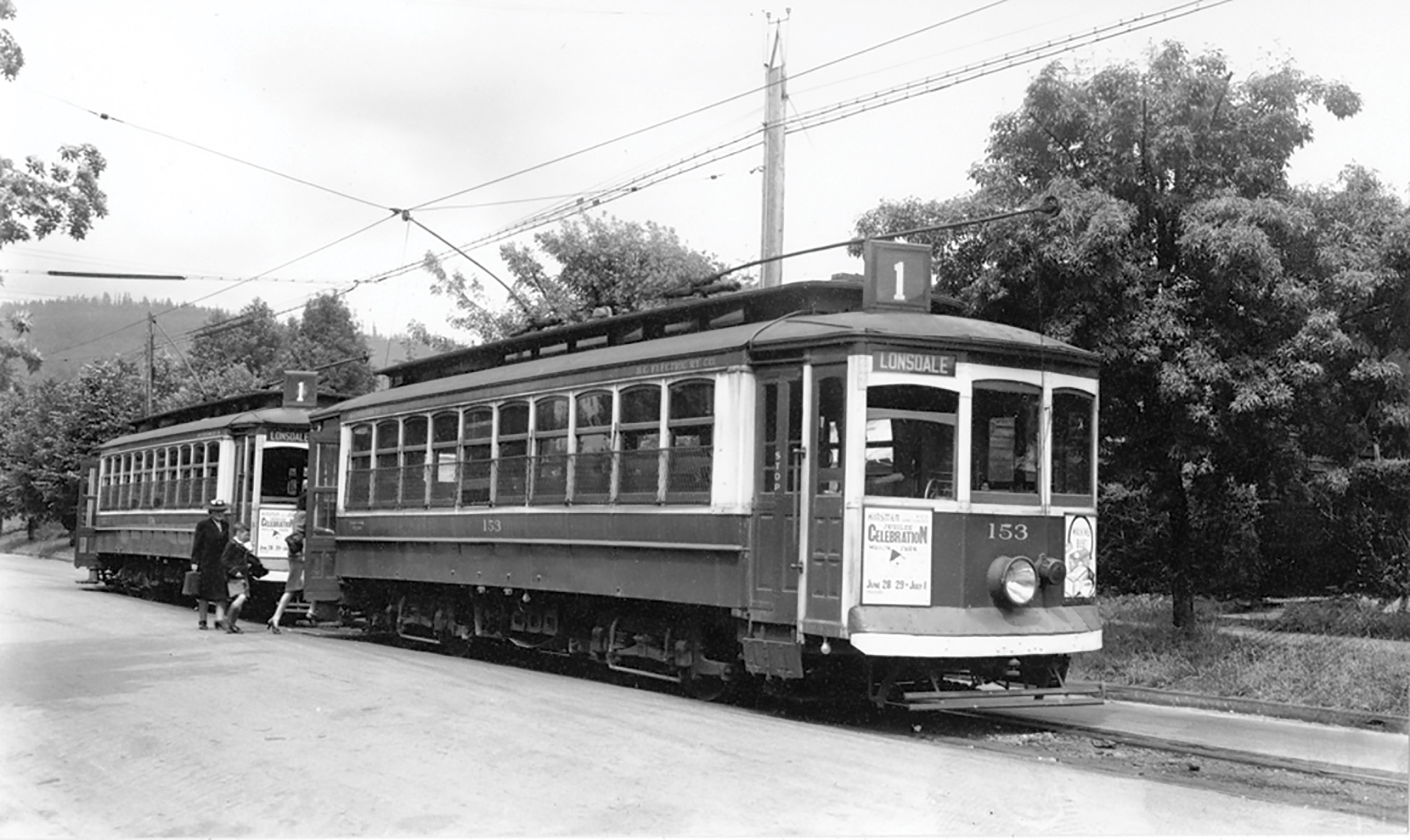
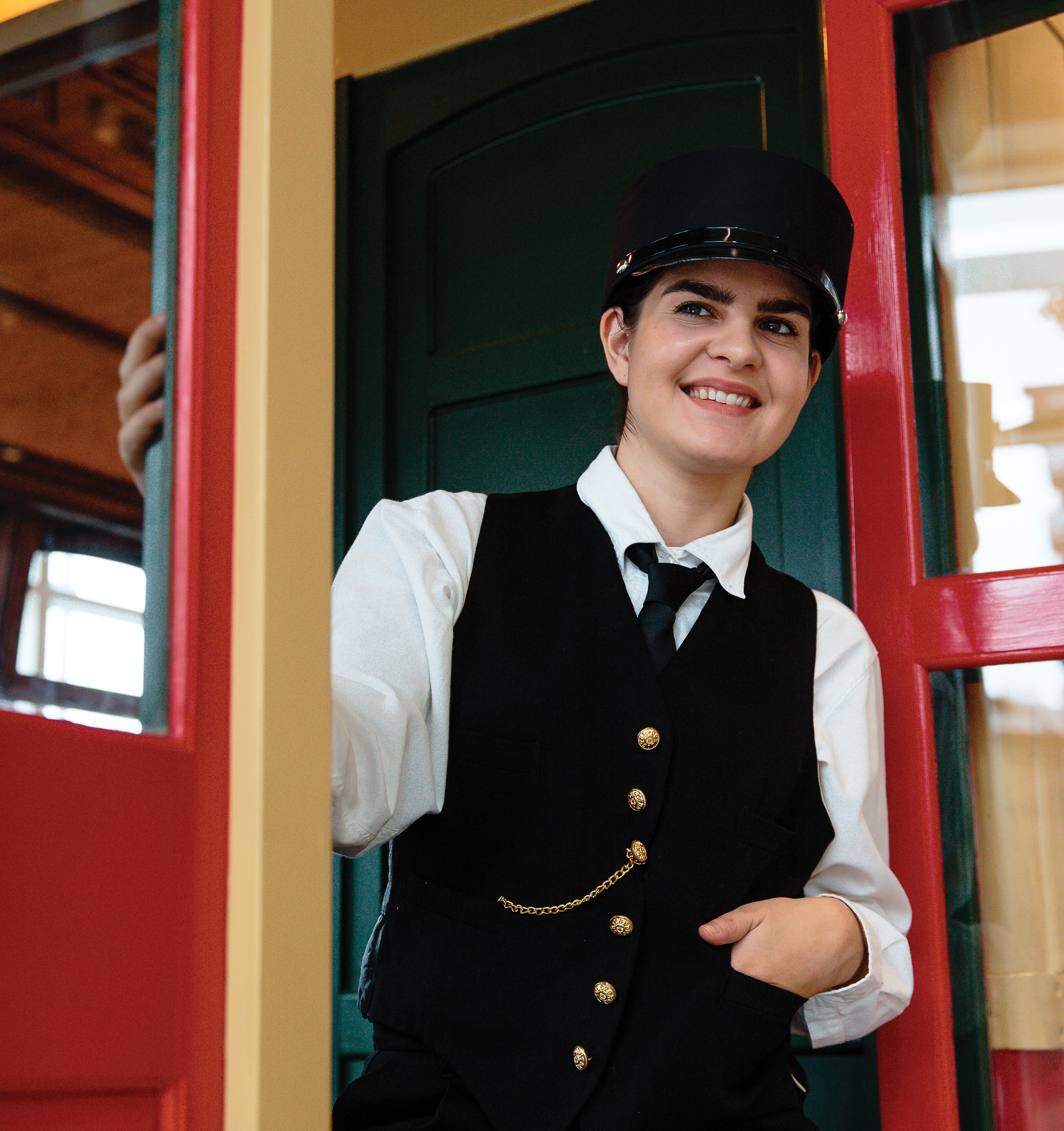 |
Above: Streetcar No. 153 at foot of Lonsdale Ave. Left: Chantal Gallant, MONOVA’s YCW-BCH Museum Theatre Intern for 2020-2021, stands in costume for a performance of Riding with Change: Streetcar Stories on the North Shore. |
The museum theatre program has been described as “the heart of the visitor experience,” but due to the pandemic closures of 2020 and consequent delays in opening MONOVA’s new building, visitors were not able to enjoy these performances in person. Gallant’s internship focused on transitioning this theatre piece, aptly entitled Riding with Change: Streetcar Stories on the North Shore, from in-person to virtual performances. Just as professional theatre and ballet companies had to adapt to virtual performances, so too did museum theatre interpretation.
Chantal wrote a blog post about the experience, noting that “had anyone told me a year ago that I would be acting to my computer screen in my basement bedroom, I probably would have thought they were absolutely out of their mind. I would have said, ‘That’s not theatre.’” Amidst all the logistical issues of trying to perform a play with costume changes from your own bedroom, other pressing questions emerged. Would people be able to engage with the material in the same way? How do you maintain an interpersonal connection in a virtual performance? Were people experiencing virtual burnout? Although when Chantal began the internship in fall of 2020, the pandemic was well underway, there was still hope of doing a combination of live and virtual shows. Chantal explains an upside to this challenge, saying “this internship pushed me to adapt as an artist and experiment in ways I wouldn’t have tried before the pandemic.” These pandemic challenges led to “moments of innovation.”
YCW interns and students across Canada were involved in projects to create virtual tours, stay-at-home spring break activities, classroom materials for elementary and high school students, online programming for all ages including jigsaw puzzles (Art Gallery of Guelph), scavenger hunts and panel discussions, just to name a few. Many also worked to digitize collections to make them more accessible to those not able to visit in person. Other examples include Oliver Museum’s 2020-2021 YCW-BCH Archives Intern Alec Wolff, who was involved in a project to digitize local newspapers. The Ottawa Museum Network’s Digital Project Manager YCW-BCH intern, Amelia Taylor, focused on improving the digital literacy of its 11 member museums. Her goal was to help these museums improve the quality of their digital content and engagement. Her two main tasks were aiding in the development of a library of shared digital tools as well as creating a digital strategy.
Where initially there was worry that museums would struggle to adapt to these pandemic demands, it was unfounded. Museums were able to do more than simply “adapt.” They stepped up and provided engaging programming that helped the public feel connected to their pasts, presents and futures, to feel more engaged and connected to the world. If anything, the pandemic helped reveal how valuable digital engagement is to the future of museums and how challenging times can lead to beneficial innovation. M
Louise Pitre is a Program Officer with Young Canada Works in Building Careers in Heritage and a YCW Communications Liaison with the Canadian Museums Association.
